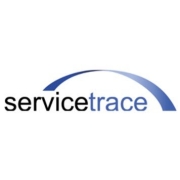Test Automation Tools streamline the process of testing software applications, ensuring consistent performance and reducing manual testing efforts. These solutions are essential in accelerating release cycles and enhancing software quality.
Test Automation Tools are integral in modern software development environments, offering developers and testers the capability to automate repetitive tasks, reducing error rates and increasing efficiency. These tools support a variety of testing types, including functional, performance, and regression testing, and integrate seamlessly with development frameworks and CI/CD pipelines.
What are the critical features?In industries such as finance, healthcare, and retail, Test Automation Tools are commonly implemented to ensure that complex applications perform reliably under various conditions. These sectors benefit greatly from automated testing, as it supports regulatory compliance and high-frequency release cycles.
Organizations find these tools beneficial for maintaining high software quality and efficient deployment. Automated testing solutions help companies achieve shorter time-to-market and provide better user experiences by catching issues early in the development process.





























































The automation testing life cycle (ATLC) refers to the complete process of test automation being used in conjunction with the structural sequence of the testing process. This can include all stages of the testing life cycle as well as additional phases for test preparation and automation deployment.
The 6 phases in the automation testing life cycle are:
Test automation tools are software platforms that allow you to design testing tasks and then automate the testing process. Automation testing tools use automated test scripts to check function and/or non-functional requirements. Testing automation tools allow performance testing to run without the need for human interaction, allowing code to be tested 24 hours a day if needed, and speeding up the test execution process as a result.
Test automation tools are available for a variety of platforms, including smartphones, mobile devices, and desktop computers. The software market is full of paid and free test automation tools. There is no such thing as a one-size-fits-all test automation tool. The right choice comes down to your team's individual requirements, based on various factors like project requirement, budget, and the expertise of the resources.
Test Automation Tools enhance software quality by executing repetitive tests efficiently, reducing human error, and providing comprehensive test coverage. Automated testing identifies bugs early in the development cycle, allowing developers to address issues before they escalate. This results in more stable and reliable software products. Automated regression testing ensures new code doesn't break existing functionality, leading to consistent software performance and quality.
What are the key features to look for in a Test Automation Tool?When evaluating Test Automation Tools, consider features like support for various scripting languages, easy integration with your existing development environment, an intuitive user interface, and robust reporting capabilities. Additionally, look for tools that provide cross-browser compatibility and can automate tests across multiple platforms, including web, mobile, and desktop. These features ensure your testing processes are adaptable, thorough, and efficient.
How does AI enhance Test Automation Tools?AI enhances Test Automation Tools by optimizing test case selection, offering intelligent error analysis, and providing predictive insights on potential failures. AI-driven tools can adapt to changes in the application, automatically updating test scripts as the code evolves. This reduces maintenance overhead and increases testing efficiency. By analyzing vast amounts of data, AI can also suggest improvements, making your test processes smarter and more effective.
Are open-source Test Automation Tools as effective as commercial ones?Open-source Test Automation Tools can be as effective as commercial ones, depending on your project's requirements and the expertise of your team. Open-source tools offer flexibility and customization options without license costs, making them appealing for budget-conscious teams. However, they may lack the extensive support and advanced features available in commercial tools. Evaluate the community support, documentation, and compatibility with your technology stack when considering an open-source option.
How does continuous integration integrate with Test Automation Tools?Continuous integration (CI) involves automatically building and testing code changes, which aligns perfectly with Test Automation Tools. These tools automate the execution of tests in the CI pipeline, ensuring immediate feedback on code quality after each commit. By integrating Test Automation Tools into your CI process, you can accelerate development, increase code quality, and reduce time to market. This integration fosters a culture of frequent testing and rapid iteration, improving overall software delivery.